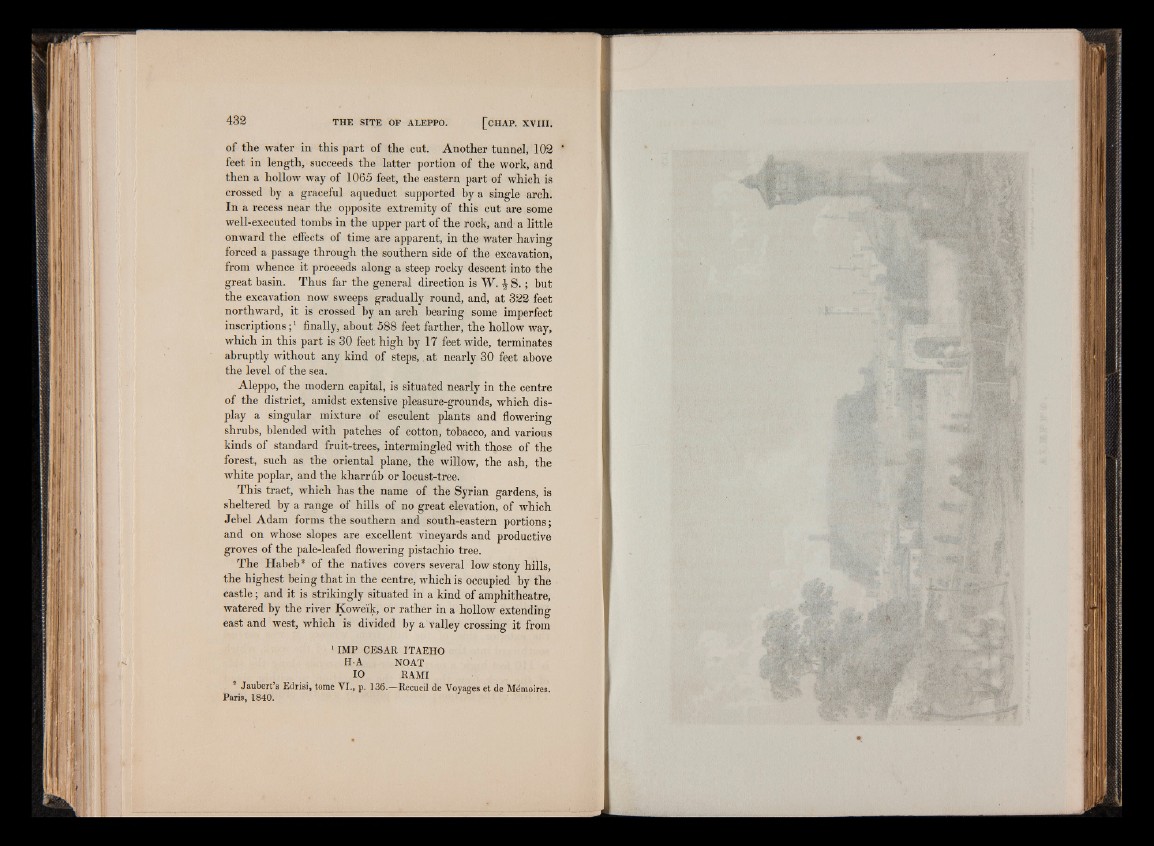
of the water in this part of the cut. Another tunnel, 102
feet in length, succeeds the latter portion of the work, and
then a hollow way of 1065 feet, the eastern part of which is
crossed by a graceful aqueduct supported by a single arch.
In a recess near the opposite extremity of this cut are some
well-executed tombs in the upper part of the rock, and a little
onward the effects of time are apparent, in the water having
forced a passage through the southern side of the excavation,
from whence it proceeds along a steep rocky descent into the
great basin. Thus far the general direction is W. J S. ; but
the excavation now sweeps gradually round, and, at 322 feet
northward, it is crossed by an arch bearing some imperfect
inscriptions finally, about 588 feet farther, the hollow way,
which in this part is 30 feet high by 17 feet wide, terminates
abruptly without any kind of steps,. at nearly 30 feet above
the level of the sea.
Aleppo, the modern capital, is situated nearly in the centre
of the district, amidst extensive pleasure-grounds, which display
a singular mixture of esculent plants and flowering
shrubs, blended with patches of cotton, tobacco, and various
kinds of standard fruit-trees, intermingled with those of the
forest, such as the oriental plane, the willow, the ash, the
white poplar, and the kharrub or locust-tree.
This tract, which has the name of the Syrian gardens, is
sheltered by a range of hills of no great elevation, of which
Jebel Adam forms the southern and south-eastern portions;
and on whose slopes are excellent vineyards and productive
groves of the pale-leafed flowering pistachio tree.
The Habeb2 of the natives covers several low stony h ills ,
the highest being that in the centre, which is occupied by the
castle ; and it is strikingly situated in a kind of amphitheatre,
watered by the river Koweik, or rather in a hollow extending
east and west, which is divided by a valley crossing it from
1 IMP CESAR ITAEHO
H A NO AT
10 RAMI
2 Jaubert’s Edrisi, tome VI., p. 136.—Recueil de Voyages et de Mémoires.
Paris, 1840.